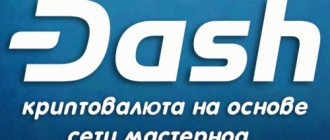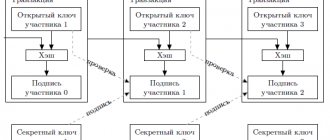Today, the second largest cryptocurrency by capitalization, Ethereum, will activate the sixth and seventh updates of the blockchain network. Known as Constantinople and St. Petersburg, both updates are implemented in the form of hard forks (updates that add new rules to the Ethereum software that are incompatible with previous versions). Both will be held on the same block number 7,280,000.
Currently, there are about 14 hours left before the “mining” of a block with this number, the number of the last block can be tracked on the Etherscan, Forkmon resource, and on Amberdata the countdown to its “arrival” in Constantinople and St. has simply started. Petersburg (scheduled for 19.15 UTC, 21.15 Kyiv time).
What is St. Petersburg and how is it connected to the Ether?
St. Petersburg is the second network update, which will take place immediately after Constantinople and will fix a security bug found. You can read more about this here. In fact, this is not an innovation, but simply a bug fix.
Two protocol upgrades will be required for the same block number to resolve issues on various Ethereum testnets such as Ropsten.
Why are updates called “forks”?
Cryptocurrency platform updates are called forks because they are like a fork in the road. This is a process in which one block chain is split into two chains. One of the chains is used by those who want to continue playing by the old set of rules, or by those who are unable to update their nodes. And another chain will be used by those who begin to follow new or updated rules.
Most often, transaction validators will discontinue older versions of client software and migrate to the latest version of the software. Miners also switch to the modernized blockchain and stop adding new blocks to the old chain. As a result, the old chain slows down and ceases to function.
PayPal co-founder calls Bitcoin a Chinese “weapon”
Expert opinion: Bitcoin will not fall below $7,000 in our lifetime
In two weeks, the number of large Ethereum addresses grew by more than 4%
If such a fork is controversial, and some users do not want changes in the operation of the blockchain, then the blockchain after the fork can split into two separate operating networks.
What should a miner do?
In order for your farms to work stably, you need to update your programs and wallets to the latest version. We recommend doing this right now to avoid problems with incompatible blocks in the chain and the risk of losing mining profits.
The following miners currently officially support the fork:
Programs
| Program | Series | Setup and download |
| Phoenix Miner | AMD/Nvidia | |
| Claymore's Dual Ethereum AMD+NVIDIA GPU Miner | AMD/Nvidia |
Download the latest version of your Ethereum wallet client:
- Latest geth wallet (v1.8.20)
- Latest Parity wallet (v2.1.11-stable)
- Latest Harmony wallet (v2.3 Build 72)
- Latest Pantheon wallet (v0.8.3)
- Latest Trinity wallet (v0.1.0-alpha.20)
- Latest version of Ethereum Wallet/Mist (v0.11.1)
Let's end Constantinople
The twice-delayed hard fork is beginning to divert a lot of resources needed for further modernization of Ethereum, the developers believe.
“I really want to leave Constantinople behind because it is distracting to many developers, the community and the entire ecosystem. What we need to focus on now is the path forward for ethereum,” said MyCrypto CEO Taylor Monahan, expressing the general opinion of participants in the process of forming and developing the Ethereum blockchain.
Let us remind you that on Monday the Nasdaq exchange began broadcasting the Bitcoin (BLX) and Ethereum Liquid (ELX) liquidity indices from Brave New Coin.
What should an owner of Ethereum or a user of the Ethereum network do?
If you store your ETH coins on an exchange (such as Coinbase, Kraken or Binance), a web wallet service (such as Metamask, MyCrypto or MyEtherWallet), a mobile wallet service (such as Coinbase Wallet, Status.im or Trust Wallet), or hardware wallet (such as Ledger, Trezor or KeepKey) - you do not need to do anything unless you are informed of additional steps. This can only be done by a special exchange or wallet service.
How to move to a new blockchain?
The main upgrades to Ethereum involve hard forks of the blockchain (splitting the block chain into two), which has already led to problems in the past. Fortunately, this time the community made the decision unanimously, so all Ethereum will switch to the new blockchain.
If you are just an ETH holder, you do not need to do anything. Exchanges, services and node owners will do this for you, so the transition will be seamless for most users. However, it is worth noting that some services will suspend deposits and withdrawals of ether during the transition. On the other hand, if you run an Ethereum , you will need to update the software.
What changes took place in Constantinople?
Ethereum Improvement Proposals (EIPs) describe standards for the Ethereum platform, including core protocol specifications, client APIs, and contract standards. The following EIPs have been implemented.
Bit offset . Now information in the Ethereum blockchain will be processed faster and more efficiently, and gas consumption will be reduced by 10 times.
Code execution has been optimized - now checking smart contracts will be a simpler task.
Gas prices for developers have been updated. The update, called “clean gas metering,” was originally created by Johnson. This will improve one of Ethereum's current usability issues: rising gas costs.
Network performance has been improved with a new scaling solution that includes several new features, including state channels.
Block reward reduced from 3 ETH to 2 ETH.
“With these improvements, we can expand the capabilities of the Ethereum blockchain to enable more use cases for the network,”
Johnson said.
Note that EIP 1283 (change in gas prices for developers) will be first introduced by Constantinople, and then immediately removed by the St. Petersburg update, since it was precisely because of this innovation that a loophole was discovered in the security system of the Ethereum network.
Read more about all the innovations here.
Ethereum 2.0. Why is it needed and what will the Constantinople hard fork change?
Part of the global update to Vitalik Buterin's cryptocurrency was supposed to take place on January 16, but it was postponed again due to a vulnerability. This is an important stage in the development of the coin, which will significantly affect the project
The Ethrereum blockchain is constantly evolving, its launch consists of four main stages, each of which is of great importance for the platform. The first of these, Frontier, ended in 2015, after which came the next important part called Metropolis. It, in turn, consists of two global updates: Byzantium, which took place in October 2022, and Constantinople, scheduled for October last year, but postponed to January 16, 2022 due to various shortcomings.
At the moment, the date of the cryptocurrency hard fork is again unknown; it was once again canceled due to a vulnerability in one of the updates. Vitalik Buterin proposed abandoning the term hard fork due to the fact that many users began to wait for the chain to split and the appearance of new coins, and scammers took advantage of this. Instead, the creator of Ethereum advised calling Constantinople an update to avoid confusion and clarify concepts.
The main changes to the Ethereum network that will occur as a result of Constantinople are:
- EIP 1234 – reward for miners will be reduced from three to two ETH
- EIP 145 - Blockchain efficiency and speed will be increased by adding Bitwise switching mechanisms to the Ethereum Virtual Machine
- EIP 1052 - the network will begin to consume less energy
- EIP 1283 - the need to use the internal currency of the Ethereum blockchain - Gas - will be reduced (a vulnerability in this update prevented the hard fork from being activated in January)
- Difficulty Bomb has been delayed by 18 months. The transition from the Proof-of-Work algorithm to Proof-of-Stake has also been postponed, that is, it will become impossible to mine on equipment, but it will be possible to receive a reward for storing money.
Safety
In addition to the vulnerabilities in the Constantinople update, due to which the activation of the hardlock had to be postponed twice already, many users fear for the security of the cryptocurrency network in the future. A decrease in the reward for mining a block will lead to a drop in the profitability of Ethereum mining, which is already low with the cost of the cryptocurrency at $120.
This, in turn, will lead to a drop in the network hashrate, making it easier for attackers to carry out a 51% attack on the blockchain coin. At the beginning of 2022, the large Ethereum Classic project encountered a similar problem, the damage exceeded $1 million, and user trust was partially lost. The next stage in the development of the cryptocurrency network, Serenity, is due to take place eight months later by Constantinople. After this, the altcoin blockchain will have to become as simple, secure and stable as possible.
Forced hard fork of Ethereum to protect against DoS attacks
In September and October 2016, several DoS attacks were carried out on the network by sending spam and empty transactions, the response to which was the implementation of two more unscheduled Ethereum hard forks:
- EIP-150 (October 18 at block 2,463,000) - consisted of carrying out urgent technical measures to improve network stability.
- Spurious Dragon (November 22 at block 2,675,000) - consisted of several updates aimed at changing the maximum size and pricing of opcodes, making future possible attacks financially unprofitable for hackers. Protection against replay attacks and a mechanism for deleting empty accounts created by hackers were also implemented, which made it possible to reduce the size of the blockchain and speed up the synchronization of clients with it.
Judging by the fact that similar cases of slowing down the Ethereum network due to deliberate actions of attackers were no longer recorded, the Ethereum hard forks were effective.
Exchanges and other cryptocurrency services need to update
Although transaction settlement times may not change immediately after the Constantinople hard fork is activated, optimization of the EIP-1024 state channel in the near future will allow the implementation of better second-layer solutions, for example, from the OmiseGo, Loom Network and Raiden platforms.
We previously reported on exchanges that are ready to accept the Constantinople hard fork by making the necessary updates. In addition, cryptocurrency services such as MyCrypto, Trust Wallet, MetaMask and Etherscan must also update their nodes.
We also remind you that Ether (ETH) holders do not need to do anything to prepare for the Constantinople update to the Ethereum network, and the associated software changes will remain largely invisible to users.
— SUBSCRIBE TO OUR CHANNEL IN TELEGRAM @WHATTONEWS
Code optimization
For starters, EIP 145 and EIP 1052 aim to improve network efficiency by making changes to the underlying Ethereum virtual machine. The EVM converts the readable code of smart contracts into ones and zeros (bytecode) and ensures its execution on nodes.
In an effort to extend the life of Ethereum and optimize performance to better meet user needs, EIP 145 and EIP 1052 aim to make life easier for smart contract developers.
EIP 145 implements a "bit shift" function that can operate through bytecode without relying on arithmetic operations such as multiplication and division. This essentially means that the smart contracts underlying decentralized applications like CryptoKitties will be processed faster in the EVM and reduce the performance hit of the entire blockchain.
Additionally, EIP 1052 introduces an update to the smart contract execution process on Ethereum that only verifies the underlying contract code data, rather than the entire code. Instead of verifying the entire contract, EIP 1052 makes it so that only the hash can be verified. This saves time and computational costs, especially for long smart contracts that run on thousands of lines of code.
Why did everything take so long?
Vitalik Buterin
This cryptocurrency “drama” began in the middle of last year. Initially, nothing foreshadowed trouble - the developers announced the successful start of testing the upcoming upgrade on the test network and confidently said that the Constantinople hard fork on the main network would take place in early November at the latest. The team was not at all concerned about the so-called “difficulty bomb” that would ultimately stop the blockchain. Thus, Vitalik Buterin, commenting on the urgency of integrating Constantinople into Ethereum, said that “this is not urgent at all” and that they “have at least three more months, and possibly more.” As it turned out, these words were prophetic (or maybe everything was intended that way from the beginning?!).
As planned, the Constantinople hard fork was carried out on the Ropsten test network in October. However, everything did not go as smoothly as expected. Initially, the developers blamed it all on the miners who did not show enough enthusiasm and did not update their software. However, later, as it turned out, the problem was much more serious. Lead developer Afri Shoedon, who, by the way, recently decided to leave the Ethereum team, discovered a critical bug in the consensus of the Ropsten test network. It caused a “three-way” hard fork between three Ethereum clients at once. Even then, Afri said that under no circumstances should we rush, everything needs to be carefully studied, and the Constantinople hard fork itself will not happen before January.
Other members of the Ethereum team listened to the opinion of Afri Schoedon, and in early December a verdict was made - the Constantinople hard fork will be activated between January 14 and 18, 2019. But that was not the case, a couple of days before the expected hard fork, the update was again postponed “indefinitely” after the ChainSecurity company discovered a critical vulnerability in the aforementioned upgrade EIP-1283, which gave hackers access to user funds.
A few days later, leading developers in the person of Vitalik Buterin, Afri Shoedon, Hudson Jameson and several others gathered at a round table to decide the future fate of Constantinople. As a result, the upgrade was planned for block 7,280,000, which should be mined in 2-3 days.
Users on Twitter expressed hope that this time there will be no surprises:
Users hope that the hard fork will be activated soon
// Source: Twitter.com
We also really hope that the developers will not find a critical bug at the last minute before activation, and the hard fork will not be postponed again for an “indefinite” time.
Three more forks
Constantinople will not be the only Ethereum fork in January. Other forces decided to play on the expected changes and were ready to launch three parallel forks:
- Classic Vision;
- Ethereum Nova;
- ERC-20 Blue.
Users were not particularly enthusiastic about three new subprojects, whose goal, most likely, was to get money out of thin air and disappear. Ethereum Classic Vision (ETCV) will be released on January 11th. The creators of this symbiosis of Bitcoin SV and Ethereum Classic write on their website about the standard disagreement with the policies of Ethereum and the desire to improve the network in accordance with the classical vision. They offer to transfer ether to a private wallet (MetaMask, Jaxx, MyEtherWallet, Ledger Nano, etc.) and receive ETCV tokens to ETH in a ratio of 3 to 1. The main goal of the project is a quick transition to the PoS algorithm.
Ethereum Nova Fork (ETN) is scheduled for 01/12/2019 and ETH holders will receive new tokens in a 1 to 1 ratio. The roadmap of this project indicates the creation of an ETN Desktop wallet in Q2 2019 and app wallets for Android and iOS. In the second half of the year, the decentralized Ethereum Nowa exchange and messenger will be created.
ERC-20 Blue was positioned as a new digital currency. Messages about it were posted on the Medium resource by unidentified persons on behalf of the Ethereum Foundation as an announcement of fundraising for scaling the network. Soon the account was deleted, and users decided that the message was made to follow phishing links to malicious resources.











